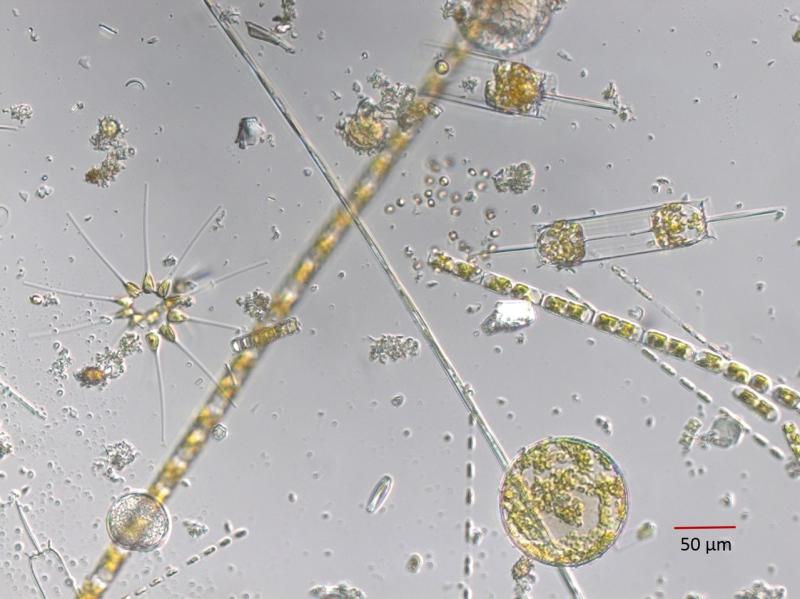While spring still seems a long way off, recently the waters of Long Island Sound awoke with new life. The spring bloom has begun—an ecologically important annual occurrence in the temperate North Atlantic Ocean, sub-polar regions, and coastal waters.
As the days begin to grow longer, more light is available and surface waters warm. This stratifies the water column, holding phytoplankton in the layer of water most exposed to sunlight. The nutrients that phytoplankton need have recently been replenished due to winter’s churning effect on the water. As they convert sunlight into food using photosynthesis, these are perfect conditions for phytoplankton to grow, and the plant-like organisms flourish in their newfound abundance.
The spring bloom is a relatively brief pulse that fuels much of the productivity of temperate marine ecosystems. In fact, the bloom can be tracked at the macro scale via changes in ocean color detected by satellite imagery. Phytoplankton are the base of most aquatic food webs. In the late winter and early spring, marine grazers, including copepods and other zooplankton, haven’t yet entered the scene to eat them. Eventually, grazing zooplankton will begin to feast on the phytoplankton and multiply.
As the water warms, filter feeders such as oysters and clams come out of dormancy and feed on phytoplankton. Forage fish such as Atlantic herring will chow down on zooplankton, and soon enough, larger fish such as striped bass will arrive to eat those forage fish. Some of these fish and shellfish will find their way onto our dinner plates. All of this life depends on mighty phytoplankton, single-celled organisms too tiny to see with the naked eye!
Diatoms dominate the spring bloom in Long Island Sound. They move with water currents, and live in houses made of glass. These "glass houses" are actually hardened cell walls made out of silica (a major component of sand and glass) called "frustules."
Diatoms come in a large variety of shapes and sizes; some having frustules with very ornate and intricate patterns. These patterns are symmetrical and geometric, allowing species to be identified and inspiring both nanotechnology and art. While diatoms are single-celled, some varieties form colonies (such as Asterionellopsis glacialis) or chains (such as Skeletonema sp.).
The photo at the top of the page, taken by Research Ecologist Dr. Judy Li with a light microscope, shows the contents of a water sample taken from Long Island Sound on January 29, 2021, which was teeming with photosynthetic life. Dr. Li specializes in phytoplankton dynamics at the Science Center’s Milford Lab.
For more information, see A Student’s Guide to the Phytoplankton of Long Island Sound.


